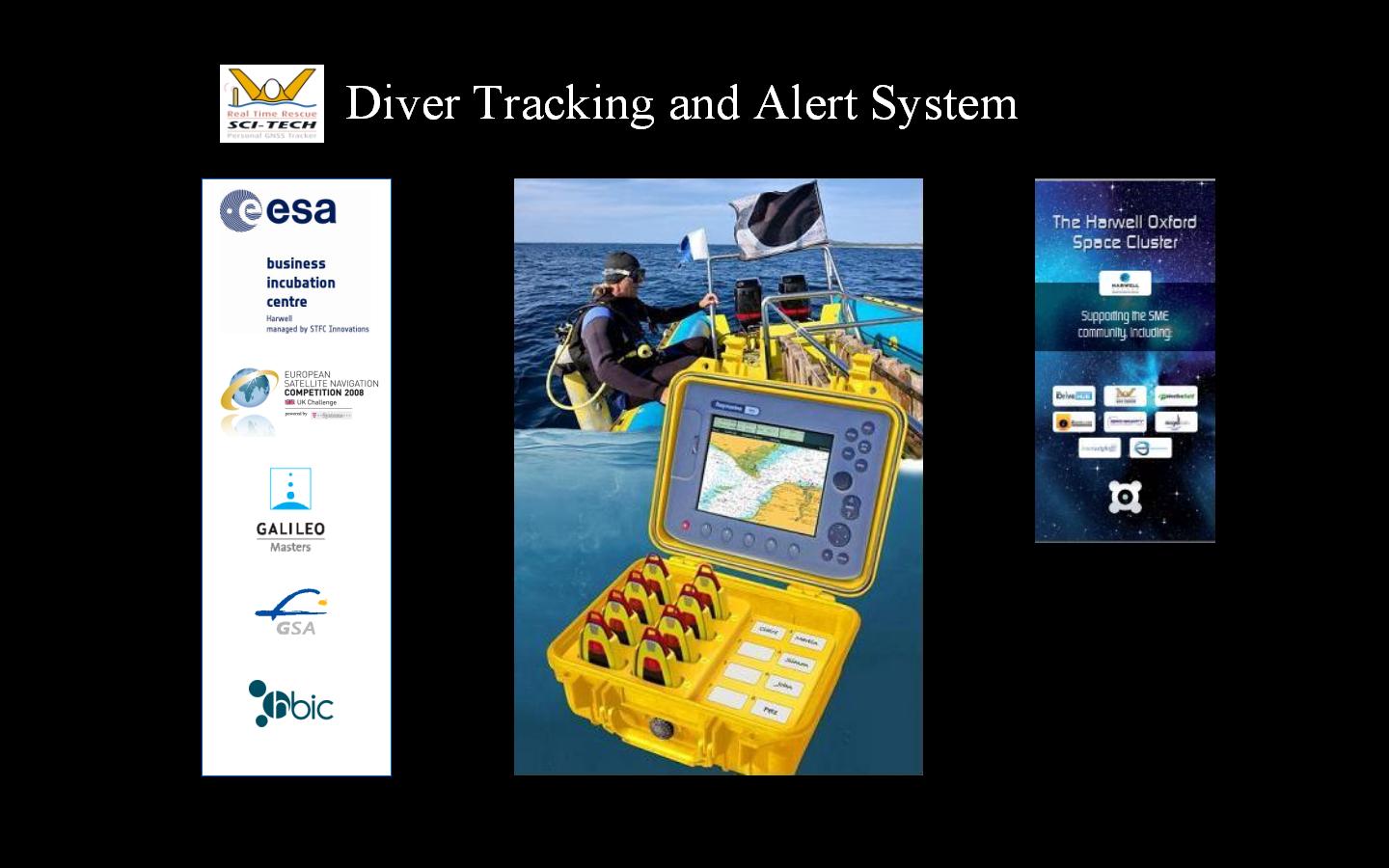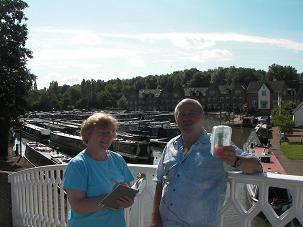
|
Braunston Trials
Life can be hard sometimes. This shows Peter and Christine carrying out trials to see whether
the system would track around a marina full of steel narrow boats. The bridge is on the Grand
Union Canal at Braunston. The trials were successful, tracking and communications were
maintained all around the marina.
|
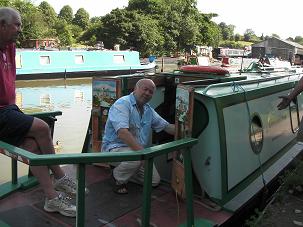
|
Braunston Trials 2
Running trials can attract a lot of attention. We were asked what we were doing by a local narrow boat
hire company and got into quite a long discussion with them. As a result of these discussions we were
asked if the unit would track inside a narrow boat. This photo shows Peter placing a diver unit in a
cubby hole of the steel boat. The unit still maintained its GNSS fix and communicated with the base
unit around 300m away. This was an unexpected success..
|
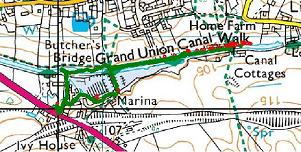
|
Braunston Trials 3
This image is a screenshot of the plotted results of the Braunston Marina trial. The green dots indicate
the position of successful transmissions, the red dots indicate success but some transmission retries.
The black cross-hair shows the position of the base station. As the range increased, a large
metal workshop in the line of sight interfered with the transmission path, hence the number of red dots.
|
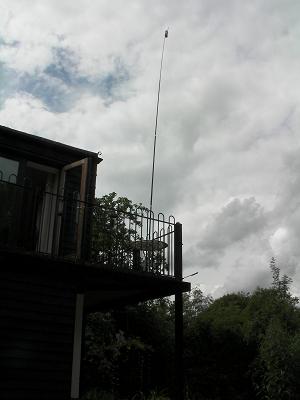
|
Braunston Trials 4
One of our tests was to try tracking a narrow boat along the canal from a base. To do this, we placed
the fixed base unit on top of a 5m pole. The results were again very good.
|
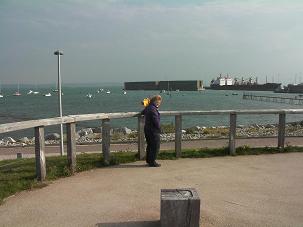
|
Weymouth Trials
Christine monitoring the mobile base unit, tracking divers and the dive boat. The expedition is
approximately 2.8km away at the harbour breakwater, hidden from view (and radio line of sight)
by the large concrete structures that can be seen in the background (unused Mulberries from WW2).
Despite this obstruction she tracked the divers and was able to liaise with the shore based team
to give advance warning of the team returning, so that they could get hot food ready for the
returning divers, and the next dive party would be ready to go.
|
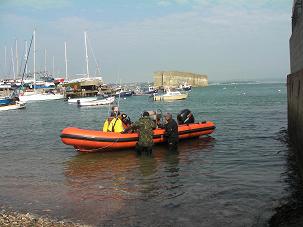
|
Weymouth Trials 2
The first dive team has returned from the breakwater, and the next set of divers are now
preparing to go out on a second dive.
|
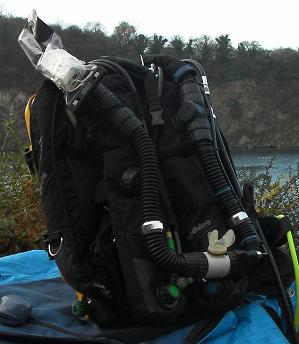
|
Stoney Cove Trials
Following the results of the Weymouth trials, we wanted to see the effect of placing the units on the diver
rather than on the Delayed Surface Marker Buoy (DSMB). The picture shows the unit attached to a
rebreather. Stoney Cove is the main inland diving site in the UK. Although we tracked the divers
successfully, the results were inconclusive as the site is relatively small, so we could not get measurements
at long range.
|
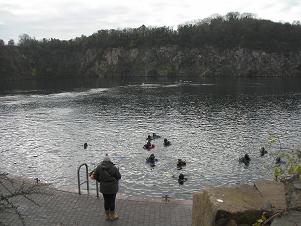
|
Stoney Cove Trials 2
Diver Soup. Note the rings on the far side of the cove. These are caused by the air bubbles of
submerged divers.
|


